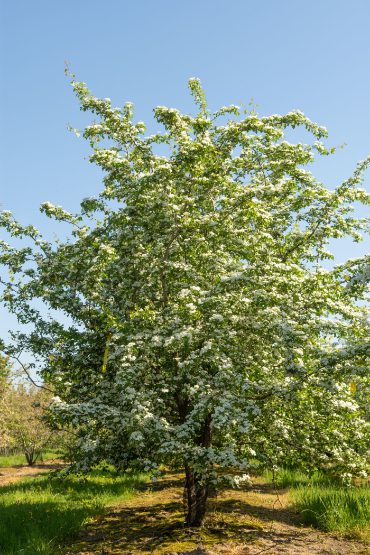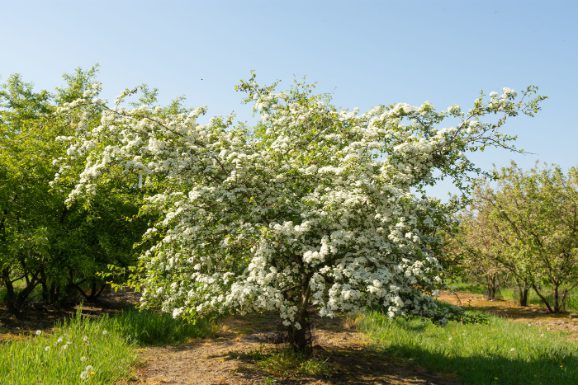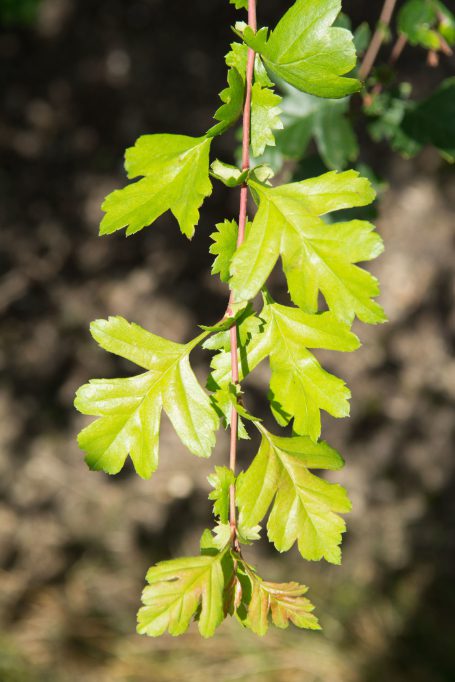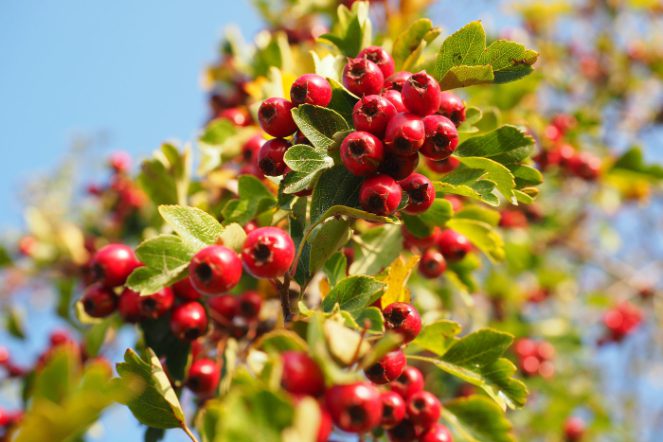Crataegus monogyna | Common Hawthorn | May Tree
The Crataegus monogyna tree is native to the UK and widely used as a hedging plant forming most of the country's hedgerows. Left on its own this plant will develop into a small tree with low branches and a broad compact crown. Dark green, deeply toothed leaves appear in spring then flat-topped clusters of highly fragrant white flowers in May. Once pollinated, the flower turns into a dark red fruit, called the 'haw', a vital source of food for birds. This tree's bark is brown-grey, knotted and fissured, and has twigs that are slender, brown and covered in sharp thorns. The Crataegus monogyna is a very hardy tree that thrives in all well-drained soil and aspects. Tolerant of coastal areas, exposure, pollution and damp sites, it is versatile and useful in hedgerows, woodlands, scrub areas, small gardens and public open spaces. An attractive tree with all year round interest, and a heaven for all wildlife; a rich source of food, nectar and pollen. The Crataegus monogyna gained its common name, the 'May Tree' after the month it flowers, marking the point at which spring becomes summer. There is an old saying: ‘Cast ne’er a clout ere May is out’.
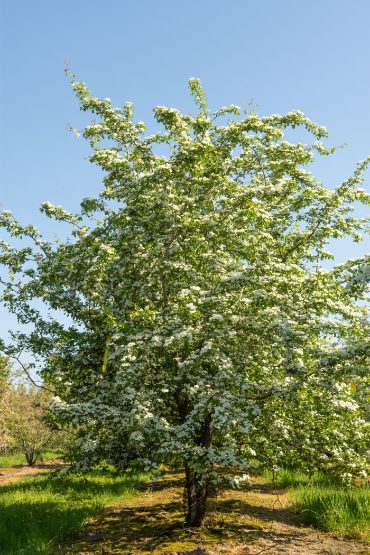
The Hawthorn is a pagan symbol of fertility and has ancient associations with May Day. It is the ancestor of the Maypole, and its leaves and flowers the choice for May Day garlands and in the wreath of the Green Man. Hawthorn was never brought into the home. It was believed that bringing hawthorn blossom inside would be followed by illness and death, and in medieval times it was said that hawthorn blossom smelled like the Great Plague. Botanists later learned that the chemical trimethylamine in hawthorn blossom is also one of the first chemicals formed in decaying animal tissue, so it is not surprising that hawthorn flowers are associated with death.

